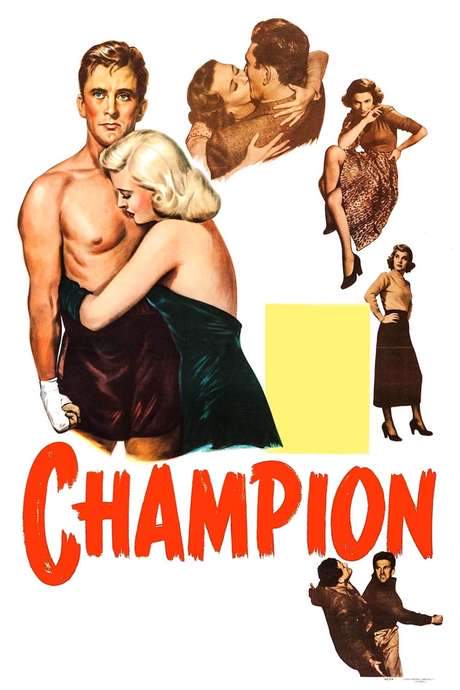
Champion
Year: 1949
Runtime: 99 mins
Language: English
Director: Mark Robson
Fighting or loving, he was the… CHAMPION An unscrupulous boxer fights his way to the top, but eventually alienates all of the people who helped him on the way up.
Warning: spoilers below!
Haven’t seen Champion yet? This summary contains major spoilers. Bookmark the page, watch the movie, and come back for the full breakdown. If you're ready, scroll on and relive the story!
Champion (1949) – Full Plot Summary & Ending Explained
Read the complete plot breakdown of Champion (1949), including all key story events, major twists, and the ending explained in detail. Discover what really happened—and what it all means.
Michael ‘Midge’ Kelly, Kirk Douglas, is a boxer who pushes himself to the top by beating opponents, backstabbing friends, and manipulating women. He double-crosses Tommy Haley, Paul Stewart, the manager who found him and helped pave his road to fame.
Midge and his brother Connie Kelly, Arthur Kennedy, are hitchhiking from Chicago to California, where they have bought a share in a restaurant. Along the way they catch a ride with top boxer Johnny Dunne, John Daheim, and his girlfriend Grace Diamond, Marilyn Maxwell, who drive them to Kansas City for Dunne’s fight that night.
Needing cash, Midge takes a low-paying undercard bout for $35. After taking a beating, the promoter pays him only $10, keeping the rest as supposed management fees. The fight brings him to the attention of trainer Tommy Haley, Paul Stewart, who tells the disinterested youngster to visit his gym in Los Angeles if he ever needs a break.
Once they reach Los Angeles, Midge and Connie discover they’ve been conned in the restaurant deal and must take jobs waiting tables and washing dishes. Both begin relationships with Emma Bryce, Ruth Roman. When Midge is found with Emma, her outraged father forces a shotgun wedding. After the ceremony, Midge deserts his wife and flees with Connie to Haley’s gym.
Midge enters his boxing career with single-minded devotion. He defeats a string of local fighters, then goes on tour and becomes ranked as a legitimate contender. He is matched with Dunne, who is in line for a championship, and organized crime figures pressure Midge to throw the fight. He agrees, but then defeats Dunne in a single round.
Grace, Marilyn Maxwell, attaches herself to Midge and persuades him to abandon Haley and be managed by Jerome Harris, Luis Van Rooten, a powerful figure with criminal ties. Seeing this as his best shot at the title, Midge accepts, much to Connie’s disgust. Connie reconnects with Emma and brings her back to Chicago to care for their ailing mother.
Now backed by a high-profile manager, Midge wins the title and becomes a fan favorite. He becomes involved with Palmer Harris, Lola Albright, a sculptor and the wife of his manager, who falls for him and urges him to divorce. Jerome refuses and instead offers Midge a large sum to end the relationship. Midge agrees, leaving Palmer heartbroken.
After defeating several second-rate challengers, Midge agrees to face Dunne in a return match. He knows he must train harder, so Haley returns as his manager, and Connie and Emma come back into his camp, though Emma is still legally married to Midge.
The highly anticipated title bout sees Midge knock Dunne to the mat in the first round, but Dunne fights back and dominates for stretches. Haley urges surrender, but Midge stays in the fight, inspired by Grace in the crowd. In a furious final stretch, Midge rallies and defeats Dunne, but the triumph leaves him mortally wounded, dying in his locker room of a cerebral hemorrhage.
After delivering a eulogy to a reporter, Connie and Emma walk away into the darkness, now free to continue their lives.
Last Updated: October 09, 2025 at 12:32
Unlock the Full Story of Champion
Don't stop at just watching — explore Champion in full detail. From the complete plot summary and scene-by-scene timeline to character breakdowns, thematic analysis, and a deep dive into the ending — every page helps you truly understand what Champion is all about. Plus, discover what's next after the movie.
Champion Timeline
Track the full timeline of Champion with every major event arranged chronologically. Perfect for decoding non-linear storytelling, flashbacks, or parallel narratives with a clear scene-by-scene breakdown.



